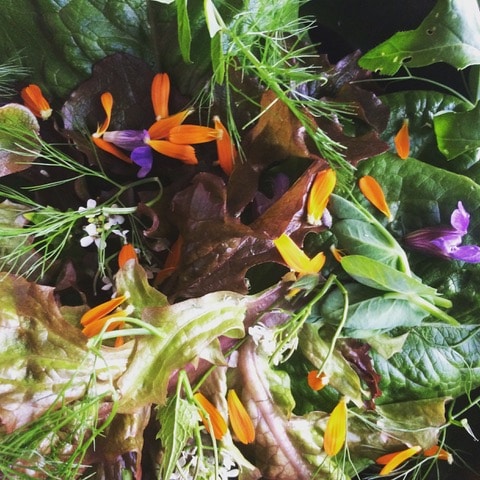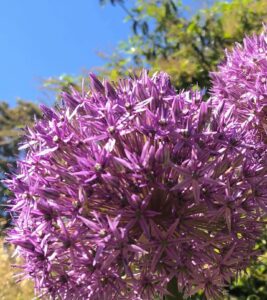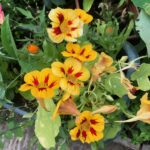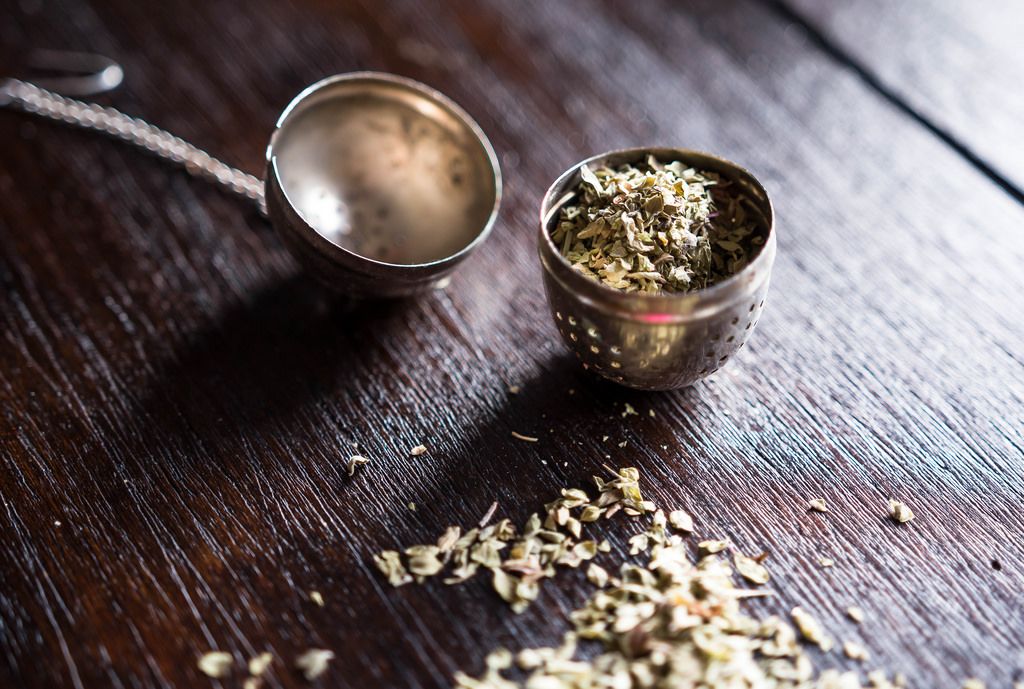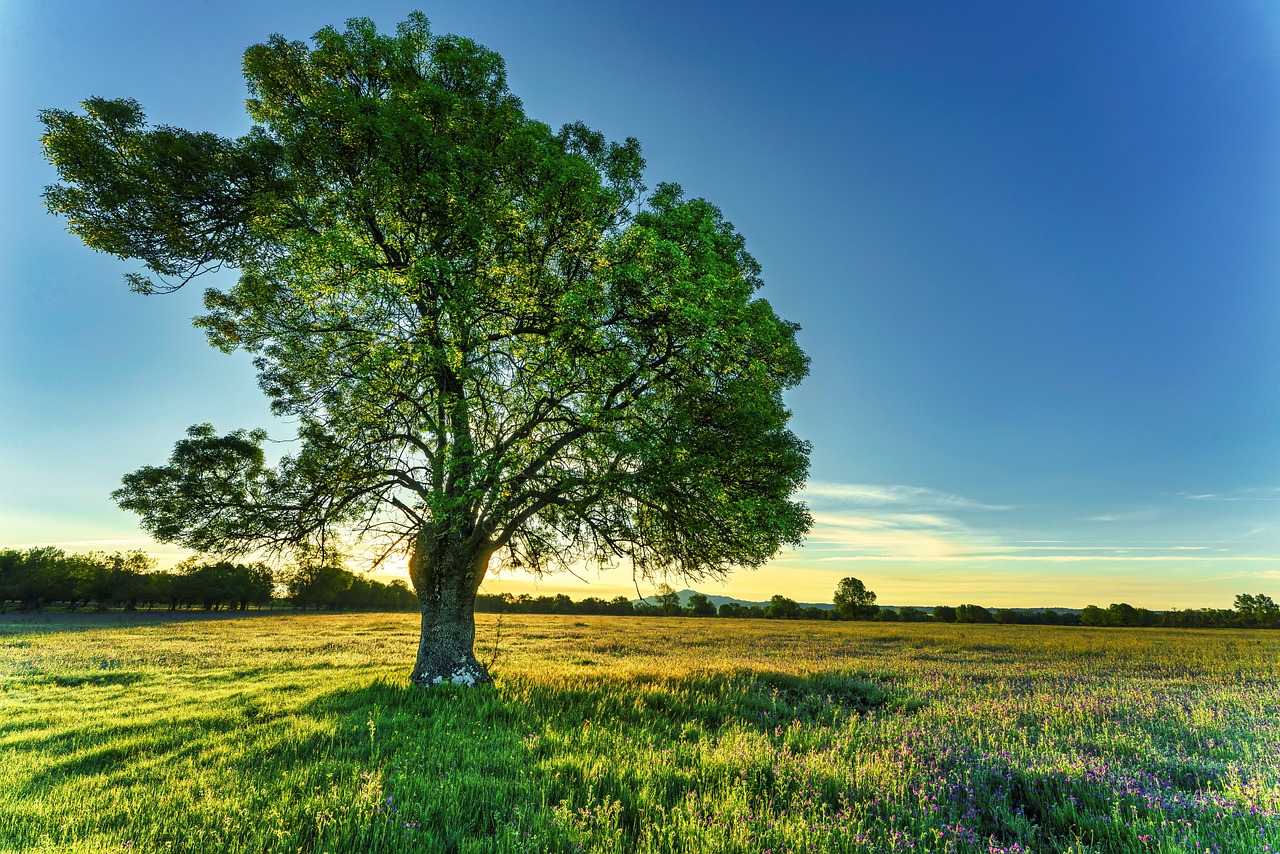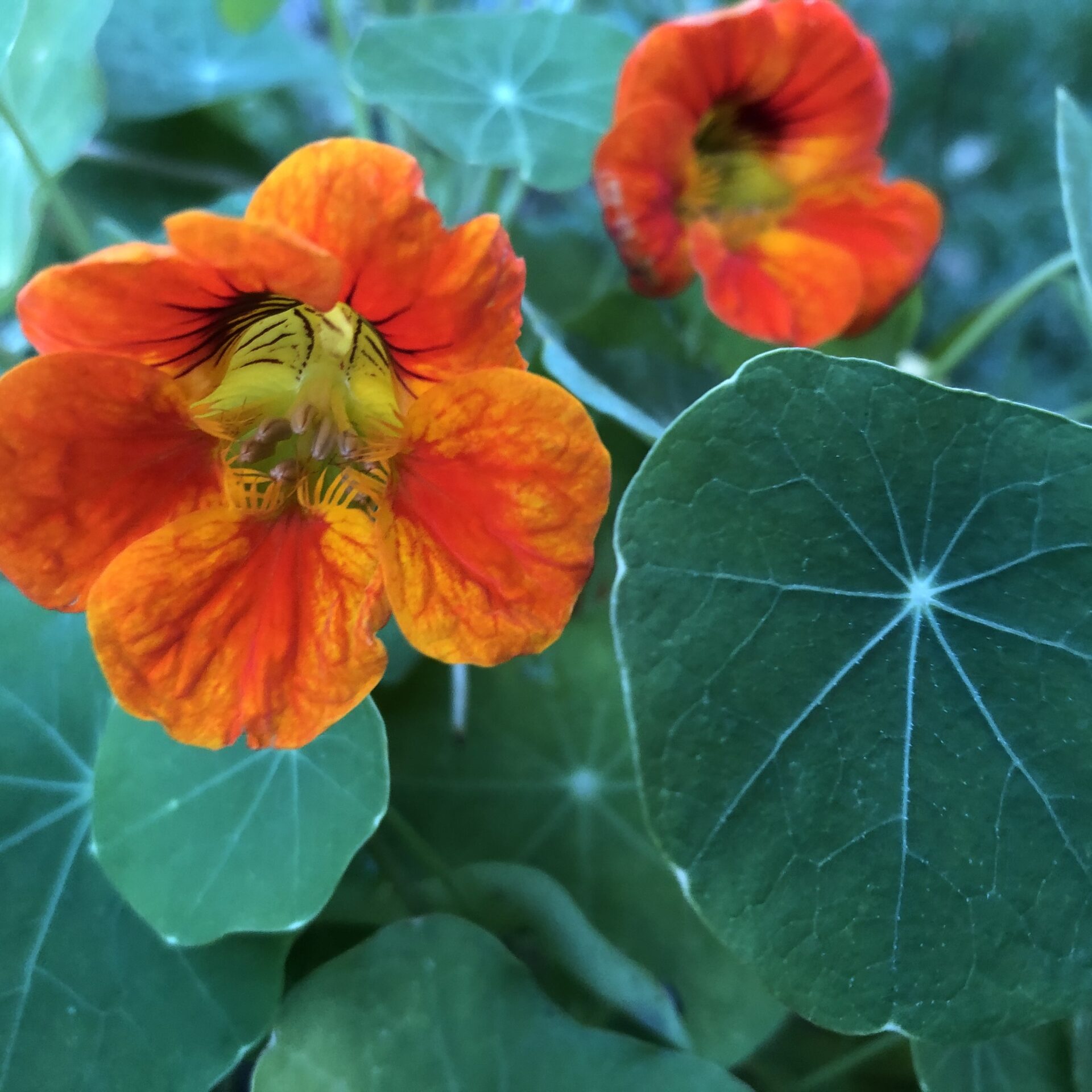‘Let thy food be thy medicine’
Hippocrates 400BC
Summer-time and the living is easy….in this light, bright and colourful season, the garden bursting with life and dynamism. Flower energy is uplifting and exciting. Their often bright colours and diverse shapes provide lots of visual stimulation, and are a perfect accompaniment to make summer flower salads.
Flower Medicine
Our relationship with flowers as medicine is documented dating back thousands of years for example through colour therapy in the ancient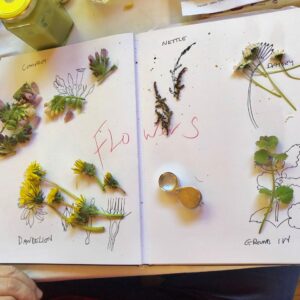 cultures of Egypt, China and India. In Victorian England, Floriography became popular – the language of flowers. Through the choice of flowers and floral arrangements, floriography allowed people to communicate and express feelings which would otherwise not have been spoken.
cultures of Egypt, China and India. In Victorian England, Floriography became popular – the language of flowers. Through the choice of flowers and floral arrangements, floriography allowed people to communicate and express feelings which would otherwise not have been spoken.
The colours that our eyes recognize are lights of varying wavelengths, thus each colour has its own individual wavelength and vibration. The first rule of the ancient Arabic discipline of pharmacy was to make the medicine beautiful and attractive thus our sense of vision begins the healing process. If we incorporate colours and flowers, our foods become an art form, pleasurable to eat and, in turn, lifting our souls.
Compounds known as flavonoids are mainly responsible for all the variations in colour of the flowers. These compounds provide the flowers ‘antioxidant’ quality. They promote the efficient workings of our own recycling and waste systems on a cellular level.
Why grow summer salad flowers
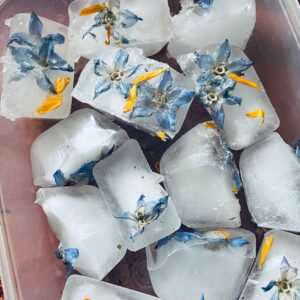 Many edible flowers are packed with medicinal and health giving properties and can be picked to enhance salads, decorate cakes, frozen into ice cubes or dried and baked into bread. Cool, mineral-rich salads are the perfect food for nourishing ourselves in the heat of summer. Blooms bring bright reds, oranges, yellows and purples amongst the lettuce leaves. Marigolds, borage flowers and nasturtium are some of our favourite salad flowers because they are easy to grow in the garden. Popping outside to harvest the leaves and blooms and watching our food becoming ART is deeply nourishing and feels fabulous.⠀
Many edible flowers are packed with medicinal and health giving properties and can be picked to enhance salads, decorate cakes, frozen into ice cubes or dried and baked into bread. Cool, mineral-rich salads are the perfect food for nourishing ourselves in the heat of summer. Blooms bring bright reds, oranges, yellows and purples amongst the lettuce leaves. Marigolds, borage flowers and nasturtium are some of our favourite salad flowers because they are easy to grow in the garden. Popping outside to harvest the leaves and blooms and watching our food becoming ART is deeply nourishing and feels fabulous.⠀
Many flowers, whether complex or simple, are designed specifically to attract insects and other pollinators. These carefully selected insects will complement the structure of the flowers to facilitate the movement of male sex cells in the pollen grains to the female stigma. Here the pollen grains germinate and release the male sex cells which eventually fuse with a female ovum. This then develops into an embryo enclosed within a seed.
It is a thymoleptic (mood-enhancing) experience to walk through wild spaces decorated with purples, yellows, whites, blues, reds and oranges. Flowers used in herbal teas provide the medicine of joy with their flashes of bright colour. We always add floral colour to our herbal teas to provide a healing feast for the eyes.
Rainbow Foods
If we take in a full spectrum of colour and literally eat a rainbow, we are getting the broadest possible range of these useful compounds, as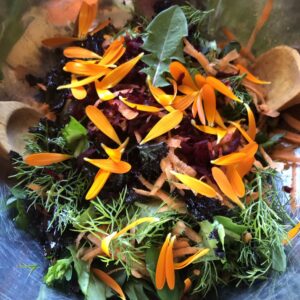 well as having a delectable feast for the eyes. Healthy eating – filling our plates with nutritious plants and herbs leaves us feeling vibrant and uplifted. The term ‘Eating the Rainbow’ as a statement is a simple way of reminding you that a variety of Herbs, fruits and vegetables in your diet will get you the vitamins and minerals you need. It also calls out the fact that you can learn a lot about your food just by looking at it. Eating a diversity of colourful foods can be an easy way to get a complete range of the vitamins and minerals your body needs to thrive.
well as having a delectable feast for the eyes. Healthy eating – filling our plates with nutritious plants and herbs leaves us feeling vibrant and uplifted. The term ‘Eating the Rainbow’ as a statement is a simple way of reminding you that a variety of Herbs, fruits and vegetables in your diet will get you the vitamins and minerals you need. It also calls out the fact that you can learn a lot about your food just by looking at it. Eating a diversity of colourful foods can be an easy way to get a complete range of the vitamins and minerals your body needs to thrive.
Yellow and orange fruits and vegetables (citrus fruits, gourds, for example) are abundant in vitamins C and A.
Green fruits and veggies (kale, spinach, asparagus, avocado) are high in vitamins K, B, and E. Purple produce on the other hand (eggplant, red cabbage, grapes) are high in vitamins C.
Most edible flowers are best eaten raw—simply pick and leave to let any insects crawl off them, we do not wash the flowers unless you are concerned about animal or pesticide contamination. Flowers will taste and look their best right after they have opened, rather than after they have been open for a few days. Whilst most flowers look incredibly attractive, that is their job after all, it is important to remember not every flower is edible. In fact, some flowers can be toxic. Be sure that you are identifying the flowers correctly and do sufficient research to ensure your safety.
For some edible and medicinal flowers that are attractive, tasty & filled with health-giving properties, consider some of the following:
Alliums
With their globes of white flowers, chives, leeks and garlic all add a delicious punch in green potato & pasta salads. All Alliums contain sulfur in the form of organosulfur compounds. These compounds have been widely studied and known to have have antioxidant, antiviral, and antibacterial properties. They have also been shown to help prevent blood clots, be anti-inflammatory, immune-boosting, and potentially anti-aging.
Borage
This fuzzy-leaved herb has sky-blue flowers with a light cucumber taste. Add to fruit salads, green salads or freeze in ice cubes for cold drinks. These iridescent petals contain antioxidants, which help reduce ‘bad’ cholesterol levels in the body and increase good cholesterol levels. They are also great for people with liver disorders. Regular intake of the borage flowers can help to balance hormones too.
Calendula 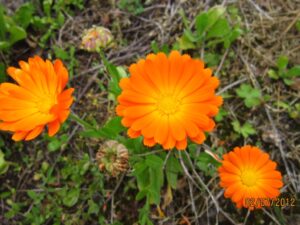
These golden beauties are an easy and prolific edible flower very easily grown from seed. Separate the petals from the center of the flower and sprinkle the petals into salads. Colours range from pure yellow to orange and red. These petals hold a high flavonoid content, which promotes cell health and potentially prevents a myriad of disease. Calendula also contains compounds called lutein and zeaxanthin which have been shown in research to protect against degenerative eye diseases.
Honeysuckle
The blossoms make a stunning addition to salads. In herbal medicine, the buds of honeysuckle flower are efficiently applied to treat various digestion related disorders. It is an excellent anti-inflammatory and anti-viral agent. But importantly – Don’t use the berries; they’re toxic.
Mints
Like Melissa, rosemary, peppermint etc all flowers of the mint family are edible and have a pleasant taste. Many like the peppermint or spearmint can aid with supporting a healthy gastrointestinal system
Nasturtiums
Blossoms have a peppery flavour similar to watercress which is in the same plant family. All the fabulous red and orange spectrum of colours are tasty in salads or as garnishes.
Violets
Do not be misled by the tiny and diminutive appearance of the violet…. This flower has anti-inflammatory properties, aided by the rutin content, which also boosts blood vessel health. Violets are also good to treat respiratory ailments. They are potassium-rich, aiding heart and muscle function too.
Edible blooms from the vegetable patch
Scarlet runner beans: Mix these bright-red flowers into salads, or in with steamed veggies.
Squash blossoms: These are delicious, with a delicate hint of cucumber and available in varying shades of yellow and orange
Enjoy your special moments growing, picking and eating the garden. Flowers have been brought into the home and used to decorate and uplift spaces for millennia and our ancestors have been eating these gorgeous magical healthful blooms forever. Making this lost art a part of our summer diet connects us to them and to the Earth.
Want to find out how to use a Magical Calendar System to harvest and store herbs?
Then check out our Beginners Guide to Magical Harvesting E-Book which includes:
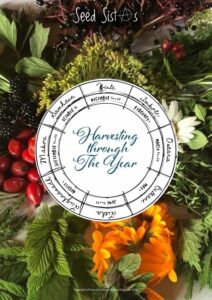 💚Magical Harvesting Checklist (printable)
💚Magical Harvesting Checklist (printable)
💚Paganism and the “Wheel of the Year”
💚Plant & Herb Identification information
💚Storing & Harvesting Tips
💚Creating Preparations from Herbs
💚For all Beginners to Harvesting (not just for people who identify as Pagans)

